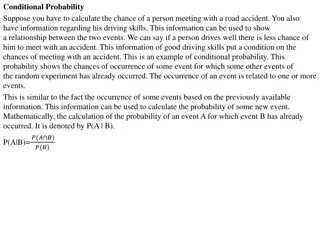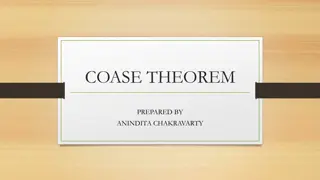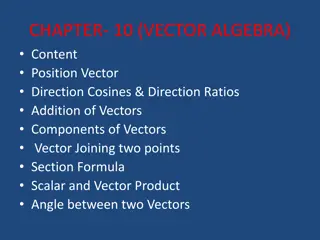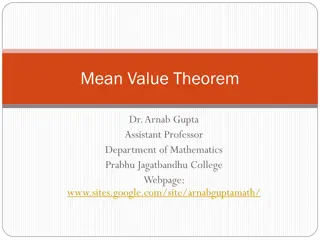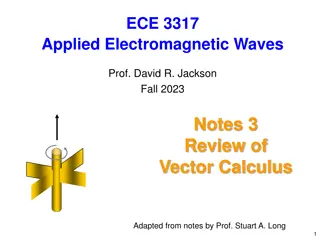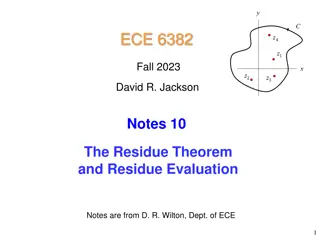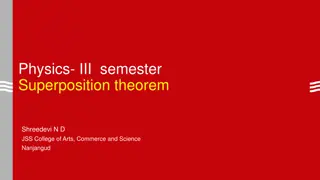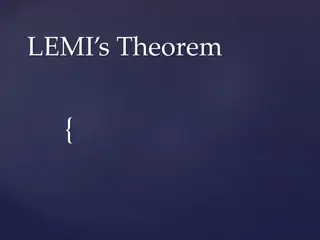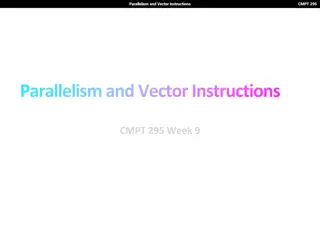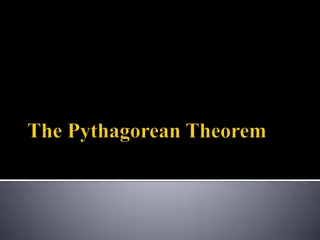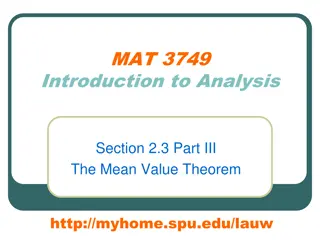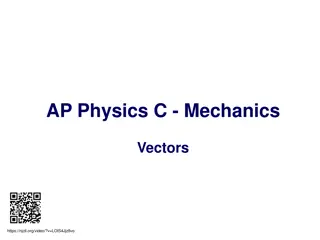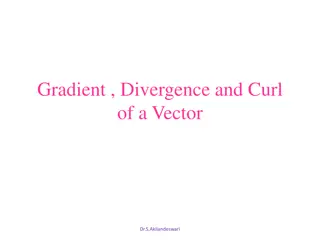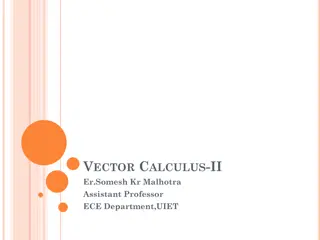Divergence and the Divergence Theorem in Vector Fields
This content discusses the concept of divergence and the divergence theorem in vector fields through detailed examples and explanations. It covers topics such as finding divA in different coordinate systems, calculating charge density in regions based on given vector fields, and applying the divergence theorem in various scenarios. The content highlights how to determine divergence, solve related problems, and understand charge distribution in different coordinate systems.
Download Presentation

Please find below an Image/Link to download the presentation.
The content on the website is provided AS IS for your information and personal use only. It may not be sold, licensed, or shared on other websites without obtaining consent from the author.If you encounter any issues during the download, it is possible that the publisher has removed the file from their server.
You are allowed to download the files provided on this website for personal or commercial use, subject to the condition that they are used lawfully. All files are the property of their respective owners.
The content on the website is provided AS IS for your information and personal use only. It may not be sold, licensed, or shared on other websites without obtaining consent from the author.
E N D
Presentation Transcript
In Fig. 4-2 the cube is turned such that face 1 is in full view; the x components of A over the faces to the left and right of 1are indicated. Since the faces are small, 1 1"""face - [A..(x)+aA.. A dS = -Ax(x) liy liz lett face A dS =Ax(x+ )t:J.yi:J.z ]liy liz ax l u A..(x + x ) A..(x) dS dS t u so that the total for these two faces is aA..l u liy liz ax The same procedure.is applied to the remaining two pairs of face.coand the results combined. fA dS - (aA..+aA,.+aAz)luliyliz ax Dividing by l u liy liz==liv and letting liv-+0, one obtains dIV = - + O X ay ay az aA,. aAz az . A 8'A. + - (cartesian) The same approach may be used in cylindrical (Problem 4.1)and in spherical coordinates. . t a 1aA aAZ az dtvA =-' ar(rA )+ -aq, (cylindrical) r , 1 a _ 2 r r 8 . a aA. 1 1 . dtv A =2- a (rA,) + - : - a (As sm 8)+- . - - r sm 8 (spherical) r sm 8 aq, EXAMPLE 1. Given the vector field A = 5x2 sin ) . . find divA at x 1. divA= a(5x2s.mm-)=5x2(c om ax 2 ( s -):r-c+lOx s.anm-=5-m 2 2 2cosm-+ 1 0 x s.mm- 2 2 2 2 and divAl...1=- 10. EXAMPLE 2. In cylindrical coordinates a vector field isgiven by A = r sin4nt,.+,Zcos4' +2re-s a.. divA at(!.:rc/2 ,0). Find (rcos 4') + (2 r e - ) =-2sin 4'- r sin 4'- (Jz divA = ! (rsin 4') + lOre- ! r 8 4 > r a r and
A = x2a..+yza,. +xyaz , find V A. Given 4.5. a a CJy a (yz)+az(xy)=2x +z V A ax( x + A = (x2+y - 4 . 6. Given a_.. find V A at (2.2,0). 112 V A= -!( r +y -312(2x) V Al 2,2.o>-= -8.84 x 10- 1 and 2 A= r sin ,Pa,+2rcos4 > +2z2az, 4 . 7. Given find V A. ta . a az t a V A =rar( sm cp)+rat (2r c o s cp)+ - (2 z2) =2sint $ 1- 2sincp+ 4.z= 4z V A=10sin2cp+ 2z cos2cp a r A = (5/r'-)a, + (10/sin 8)a8 - r2,Psin8 find V A . ta V A = - - ( 5 ) + -- - ( 10)+- r2ar rsin9a8 4.9. Given . a a 1 1 - ( - cpsan 9)= - r rsin8acp - A= 5sin 8ae +5sin4' find V A at (0.5,rr/4, rr/4). 4.10. Given 9 1 1 (5sincp)= 10cos + 5 coscp rsin 9a.p V Al1o.s . .. ,4.,..,4>=24.14 V A = - - rsin 9a9 (5sin29 ) + - - r sin 9 r and 4.11. Given that D =p0zaz (p0z/lzl)az - 1s z s 1 in cartesian coordinates and D = in the region elsewhere, find the charge density. V D = p For - t s z s t , and for z < - 1 or z > I, a P =az(=fPo)=O 1be charge distribution is shown in fig. 4-5.
4.U. Given that D ={10r3/4)a, (C/m2) in the region 0< r3m in cylindrical coordinates and D = (810/4r)a. (C/m2) elsewhere, find the charge density. p ,.._1_a(to,. )= 10r2 (C/m3) rar and for r > 3 m, For O< r 3m, 4 1 a p =,.a,.(810/4)= 0 4.13. Given that D= Q (1-cos 3r)a,- rrr2 in spherical coordinates, find the charge density. 1a[ - ar Q - ] 3Q 2 r - ( l - c o s 3 r ) = - s i n trr2 p =,.z- 3r trr2 ) and for r > l m, D=(- 4 x 4.14. In the region 0< r s 1m, D =(- 2 x 10-4/r)a, (C/m2 10-4/r)a, (C/m2 , For O <r l m , i n spherical coordinates. Find the charge density in both regions. ) and for r > lm , 1 a(- 4 X 10"4 =rar p ) = 0 2, D=(5r/4)a, and for r > 2, D =(20/r2)a, in 4. 15. In the region r Find the charge density. spherical coordinates. For r 2 , 1 a p = -,za,. (5r4/4) = 5r and for r >2, 1 a -,.(20)= 0 P ",.a (10x3/3)a (C/m2 , 4.16. Given that D volume of a cube, 2m on an edge, centered at the origin and with edges parallel to the axes. f n d S =L (V D)dv Since D hasonly an x component, D dS iszero on all but the faces at x = 1m and x =- 1m (see Fig. 4-6). fD dS= =I 40 40 80 = - + - = - C 3 3 3 evaluate both sides of the divergence theorem for the ) 1 I It10(1) .. dyd:ta.+J'It10( 1) . dydz(- a.) - 1 - 1 3 - 1 - t 3




